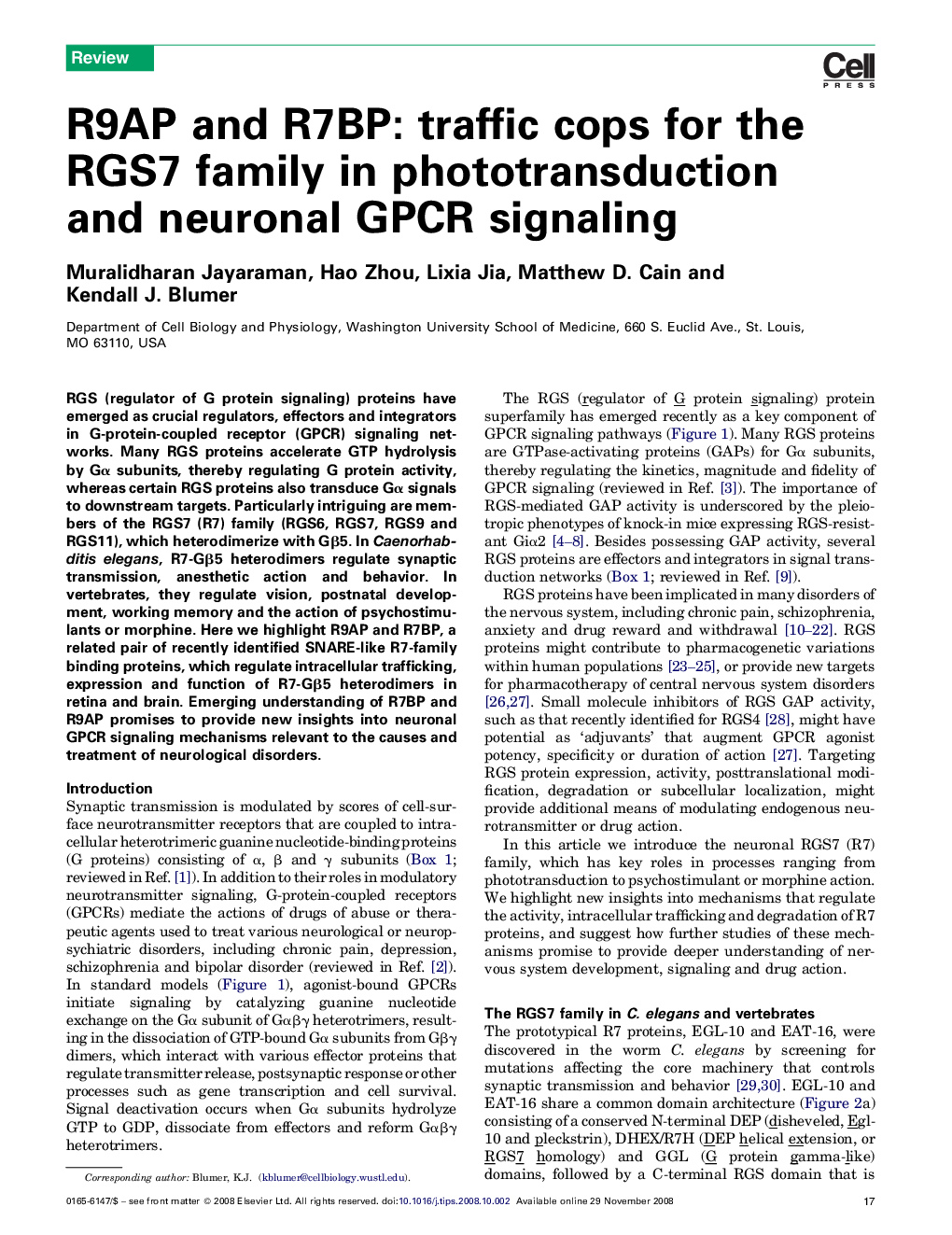| Article ID | Journal | Published Year | Pages | File Type |
|---|---|---|---|---|
| 2573400 | Trends in Pharmacological Sciences | 2009 | 8 Pages |
RGS (regulator of G protein signaling) proteins have emerged as crucial regulators, effectors and integrators in G-protein-coupled receptor (GPCR) signaling networks. Many RGS proteins accelerate GTP hydrolysis by Gα subunits, thereby regulating G protein activity, whereas certain RGS proteins also transduce Gα signals to downstream targets. Particularly intriguing are members of the RGS7 (R7) family (RGS6, RGS7, RGS9 and RGS11), which heterodimerize with Gβ5. In Caenorhabditis elegans, R7-Gβ5 heterodimers regulate synaptic transmission, anesthetic action and behavior. In vertebrates, they regulate vision, postnatal development, working memory and the action of psychostimulants or morphine. Here we highlight R9AP and R7BP, a related pair of recently identified SNARE-like R7-family binding proteins, which regulate intracellular trafficking, expression and function of R7-Gβ5 heterodimers in retina and brain. Emerging understanding of R7BP and R9AP promises to provide new insights into neuronal GPCR signaling mechanisms relevant to the causes and treatment of neurological disorders.
